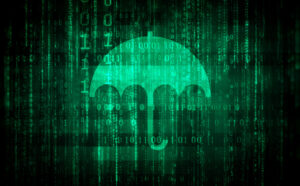The Importance of Monitoring Brands on Social Media and Advanced Strategies to Counter Infringements
Online presence plays a crucial role in shaping a brand’s image, but this visibility also exposes it to significant risks such as counterfeiting, defamation, and rights violations. Social media, as both a catalyst for opportunities and a breeding ground for threats, demands increased vigilance. Companies must integrate monitoring as a fundamental element of their intangible asset management strategy. Dreyfus, an expert in intellectual property, positions itself as a key player in this field by providing tailored technical and legal solutions.
The Imperative of Proactive Monitoring on Social Media
Contrary to a commonly held assumption, content hosts (Facebook, Instagram, TikTok, etc.) are not legally obligated to actively monitor what is posted. According to the European Directive 2000/31/EC on electronic commerce, these technical intermediaries can only be held liable once notified of the existence of illegal content. This legal gap forces companies to assume active monitoring themselves to protect their brand.
The risks faced by companies that neglect monitoring are diverse and severe:
- Counterfeiting: The dissemination of counterfeit products via social media affects revenues and weakens brand image.
- Defamation and Smear Campaigns: A viral negative publication can irreparably damage a company’s reputation.
- Identity Theft: Fake accounts exploiting the name of a brand or its executives undermine stakeholder trust.
- Intellectual Property Rights Violations: Unauthorized use of logos or trade names can erode the legal protection of these assets.
Takedown Mechanisms: Pillars of a Reactive Response
Platforms such as Amazon, Alibaba, and Facebook have implemented “notice and takedown” procedures that allow illegal content to be reported and removed. These mechanisms directly address the proliferation of infringements within their ecosystems.
Typical Steps in a Takedown Procedure
- Identifying Infringing Content: This involves automated tools or manual analysis to pinpoint problematic posts.
- Notifying the Host: A formal request, including evidence of the violation, is submitted to the relevant platform.
- Review by the Host: Moderation teams assess the compliance of the request with internal policies and the legal framework.
- Content Removal: If the complaint is valid, the illegal content is swiftly deleted or blocked.
- Follow-up and Escalation: In cases of rejection or recurrence, legal actions may be considered.
A notable example is Amazon’s “Brand Registry” program, which provides brand owners with tools to monitor listings and report violations. Alibaba offers similar functionalities tailored to the Asian e-commerce context.
Why Rely on a Specialist Like Dreyfus?
Turning to experts maximizes the chances of success and minimizes delays in takedown procedures. Dreyfus offers:
- Deep Legal Expertise: Each case is evaluated based on the applicable legal framework and relevant jurisprudence.
- Advanced Technological Tools: Automated monitoring ensures rapid and accurate detection of infringements.
- Comprehensive Support: From initial monitoring to potential legal proceedings, Dreyfus handles the entire process.
Social Media: Opportunities and Vulnerabilities
The open and participatory nature of social media, while a source of marketing opportunities, also serves as a gateway for various infringements.
- Fraudulent Advertisements: These exploit a brand’s image to redirect users to counterfeit sites.
- Shocking or Controversial Content: Associating a brand with controversial themes harms its public perception.
- Orchestrated Smear Campaigns: Fabricated negative reviews, hostile hashtags, or defamatory posts erode reputation.
Three Strategic Axes for Enhanced Protection
Brands must adopt a multi-level approach: proactive, preventive, and reactive.
- Proactive: Maintain a Visible and Active Presence
Regular communication on social media helps monitor and control discussions about the brand.
- Preventive: Implement Structured Monitoring
Surveillance tools—such as automated crawlers or configurable alerts—detect potential infringements before they escalate.
- Reactive: Leverage Legal and Technical Remedies
Takedown procedures and legal actions remain essential steps to counter confirmed infringements.
A Changing Future: Challenges and Perspectives
The rapid evolution of technologies and online practices presents new challenges:
- The Emergence of Deepfakes: These falsified contents complicate issues of defamation and counterfeiting.
- Increased Regulation: The legal framework governing platforms could evolve, affecting host responsibilities.
- Dual Use of Artificial Intelligence: While useful for monitoring, AI can also be exploited for malicious purposes.
Conclusion
Monitoring brands on social media is an indispensable strategic issue. Given the absence of proactive oversight by platforms, it is essential for companies to adopt comprehensive defense strategies. With the support of experts like Dreyfus, they can anticipate and counter threats while ensuring the sustainability and credibility of their brand in an ever-evolving digital environment.
Join us on social media!





 The WHOIS protocol now appears to be outdated due to the evolution of technical requirements in the digital era. Indeed, this tool, provided by registrars, is inter alia not capable of working with either encoding or with non-latin characters. Consequently, since 2015, ICANN in collaboration with the Internet Engineering Task Force (IEFT) has been working on the replacement of WHOIS through the RDAP (Registration Data Access Protocol), in compliance with the Temporary Specifications and the GDPR.
The WHOIS protocol now appears to be outdated due to the evolution of technical requirements in the digital era. Indeed, this tool, provided by registrars, is inter alia not capable of working with either encoding or with non-latin characters. Consequently, since 2015, ICANN in collaboration with the Internet Engineering Task Force (IEFT) has been working on the replacement of WHOIS through the RDAP (Registration Data Access Protocol), in compliance with the Temporary Specifications and the GDPR.
 Cyber-attacks are on the rise, and they are becoming more sophisticated. Our current business model is globally interconnected; commercial transactions and even social life transcend national borders. Consequently, our vulnerability to cyber-attacks has been increased, however, the competences of the cyber security and police authorities, as well as political responses, are predominantly national.
Cyber-attacks are on the rise, and they are becoming more sophisticated. Our current business model is globally interconnected; commercial transactions and even social life transcend national borders. Consequently, our vulnerability to cyber-attacks has been increased, however, the competences of the cyber security and police authorities, as well as political responses, are predominantly national.